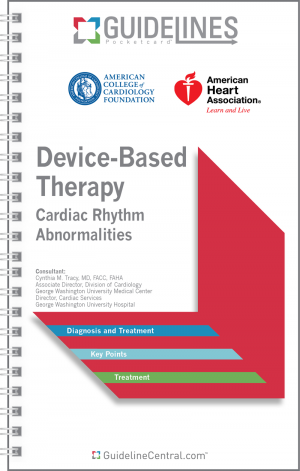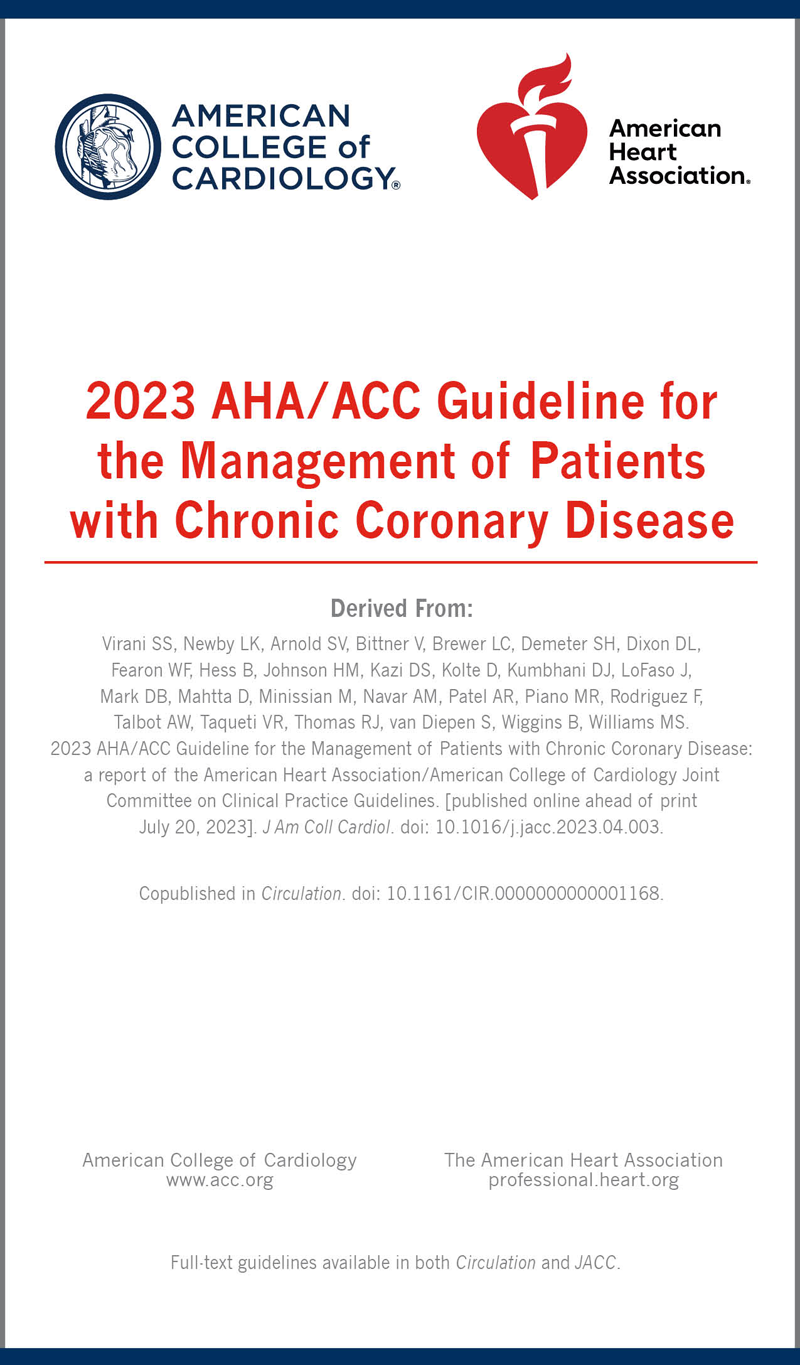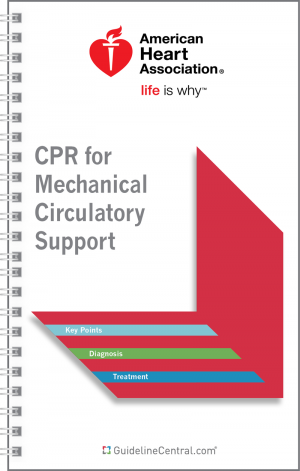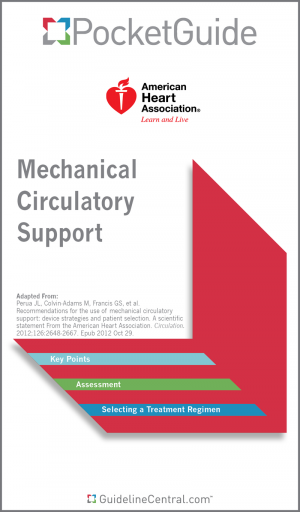Management of Patients with Chronic Coronary Disease
- 66 pages
- Spiral Bound
- 80# Aqueous Coating
- 4.25" x 7.25"
- Ships in 5 – 10 business days
- Key Points
- Top 10 Take-Home Messages
- Introduction
- Diagnosis
- Evaluation, Diagnosis, and Risk Stratification
- Treatment
- Revascularization
- Special Populations
- Patient Follow-Up: Monitoring and Managing Symptoms
- Other Important Considerations
- Tables
- US Heart Disease Prevalence, by Age, Race, Ethnicity, and Sex, 2015–2018
- Potential Features Associated With a Higher Risk of MACE Among Patients With Established CCD
- Suggested Screening Tool to Assess Psychological Distress: Patient Health Questionnaire-2 Depression Screen
- Suggested Screening Questions to Assess Psychological Health
- Behavioral Resources for Smoking Cessation
- Substances With Abuse Potential and Adverse Cardiovascular Effects for Patients With CCD
- Very High-Risk of Future ASCVD Events
- High-, Moderate-, and Low-Intensity Statin Therapy
- Nonpharmacologic Strategies for Blood Pressure Management
- Core Components of CR
- Screening Questions for SCAD-Associated Arteriopathies and Connective Tissue Disorders
- Clinical Criteria for Suspecting Microvascular Angina
- Diagnostic Criteria for Vasospastic Angina
- Invasive Coronary Function Testing Definition and Linked Pharmacotherapy for INOCA Endotypes
- Traditional and Nontraditional Risk Factors Associated With CCD in Young Adults
- Nonatherosclerotic Causes of CCD in Young Adults: Evaluation and Management
- CARPREG II Risk Prediction Model
- Safety of Cardiovascular Medications During Pregnancy and Lactation
- The Geriatric 5 Ms
- Common Antiretroviral Therapy Drugs and Effects on Lipid Levels
- Drug-Drug Interactions With Statins and Immunosuppressants and Recommendations for Management
- Figures
- US Prevalence of CHD per 100,000, by Age and Sex (NHANES 2015–2018)
- “Ever Told You Had Angina or CHD?” Age-Adjusted US Prevalence, by State (BRFSS Prevalence and Trends Data, 2019)
- Global Age-Adjusted Prevalence of CCD per 100,000, by Sex, 2020
- Domains to Consider When Seeing a Patient With CCD
- Team-Based Approach Reflective of Interconnectedness and Communication
- Social Determinants of Health and Cardiovascular Care for Patients With CCD
- Recommended Nutrition
- Lipid Management in Patients With CCD
- Recommended Duration of Antiplatelet Therapy
- Team-Based Cardio-Obstetrics Model of Care
- For purchases under 100 in quantity, we suggest placing the order directly through the website.
- We offer group/institutional licenses for multi-user accounts (discount amount varies depending on the number of users).
- We are proud to offer special discounts to medical schools, training programs, students and more.
- We offer bulk purchase discounts based on number of copies and number of titles.
Contact Us for more details
Our mission is to build healthier lives, free of cardiovascular diseases and stroke. That single purpose drives all we do. AHA's Professional Membership is a made up of a robust group of cardiovascular professionals who participate in discovery and dissemination of science.
Description
This resource is for informational purposes only, intended as a quick-reference tool based on the cited source guideline(s), and should not be used as a substitute for the independent professional judgment of healthcare providers. Practice guidelines are unable to account for every individual variation among patients or take the place of clinician judgment, and the ultimate decision concerning the propriety of any course of conduct must be made by healthcare providers after consideration of each individual patient situation. Guideline Central does not endorse any specific guideline(s) or guideline recommendations and has not independently verified the accuracy hereof. Any use of this resource or any other Guideline Central resources is strictly voluntary.
You can also find this product included in these bundles!
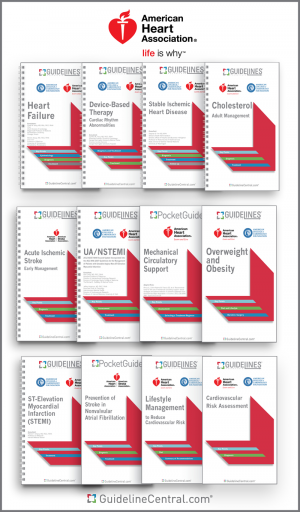
- Coronary Artery Revascularization
- CPR for Mechanical Circulatory Support
- Device-Based Therapy
- Diagnosis and Management of Aortic Disease
- Diagnosis and Treatment of Patients with Hypertrophic Cardiomyopathy
- Early Management of Patients With Acute Ischemic Stroke
- Evaluation and Diagnosis of Chest Pain
- Evaluation and Management of Patients with Bradycardia and Cardiac Conduction Delay
- Evaluation and Management of Patients With Syncope
- Heart Failure
- Management of Adults with Congenital Heart Disease
- Management of Blood Cholesterol
- Management of Patients with Atrial Fibrillation
- Management of Patients with Chronic Coronary Disease
- Management of Patients With Ventricular Arrythmias and the Prevention of Sudden Cardiac Death
- Mechanical Circulatory Support
- Mechanical Circulatory Support — Ambulatory and Community Patient Care
- Non-ST-Elevation Acute Coronary Syndromes
- Perioperative Cardiovascular Evaluation and Management of Patients Undergoing Noncardiac Surgery
- Peripheral Artery Disease Lower Extremity
- Prevention Of Stroke In Nonvalvular Atrial Fibrillation
- Prevention of Stroke In Women
- Prevention, Detection, Evaluation, and Management of High Blood Pressure in Adults
- Primary Prevention of Cardiovascular Disease
- Primary Stroke Prevention
- ST-Elevation Myocardial Infarction (STEMI)
- Stable Ischemic Heart Disease
- Supraventricular Tachycardia
- Valvular Heart Disease
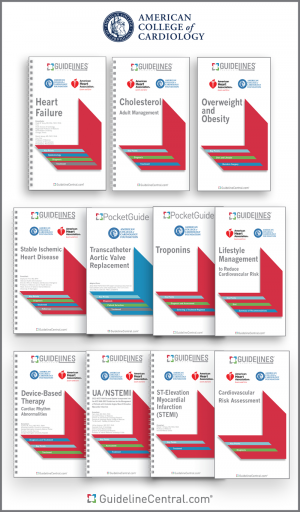
- Coronary Artery Revascularization
- Device-Based Therapy
- Diagnosis and Management of Aortic Disease
- Diagnosis and Treatment of Patients with Hypertrophic Cardiomyopathy
- Evaluation and Diagnosis of Chest Pain
- Evaluation and Management of Patients with Bradycardia and Cardiac Conduction Delay
- Evaluation and Management of Patients With Syncope
- Heart Failure
- Management of Adults with Congenital Heart Disease
- Management of Blood Cholesterol
- Management of Patients with Atrial Fibrillation
- Management of Patients with Chronic Coronary Disease
- Management of Patients With Ventricular Arrythmias and the Prevention of Sudden Cardiac Death
- Non-ST-Elevation Acute Coronary Syndromes
- Perioperative Cardiovascular Evaluation and Management of Patients Undergoing Noncardiac Surgery
- Peripheral Artery Disease Lower Extremity
- Prevention, Detection, Evaluation, and Management of High Blood Pressure in Adults
- Primary Prevention of Cardiovascular Disease
- ST-Elevation Myocardial Infarction (STEMI)
- Stable Ischemic Heart Disease
- Supraventricular Tachycardia
- Valvular Heart Disease
Related Guidelines

Peripheral Artery Disease Lower Extremity
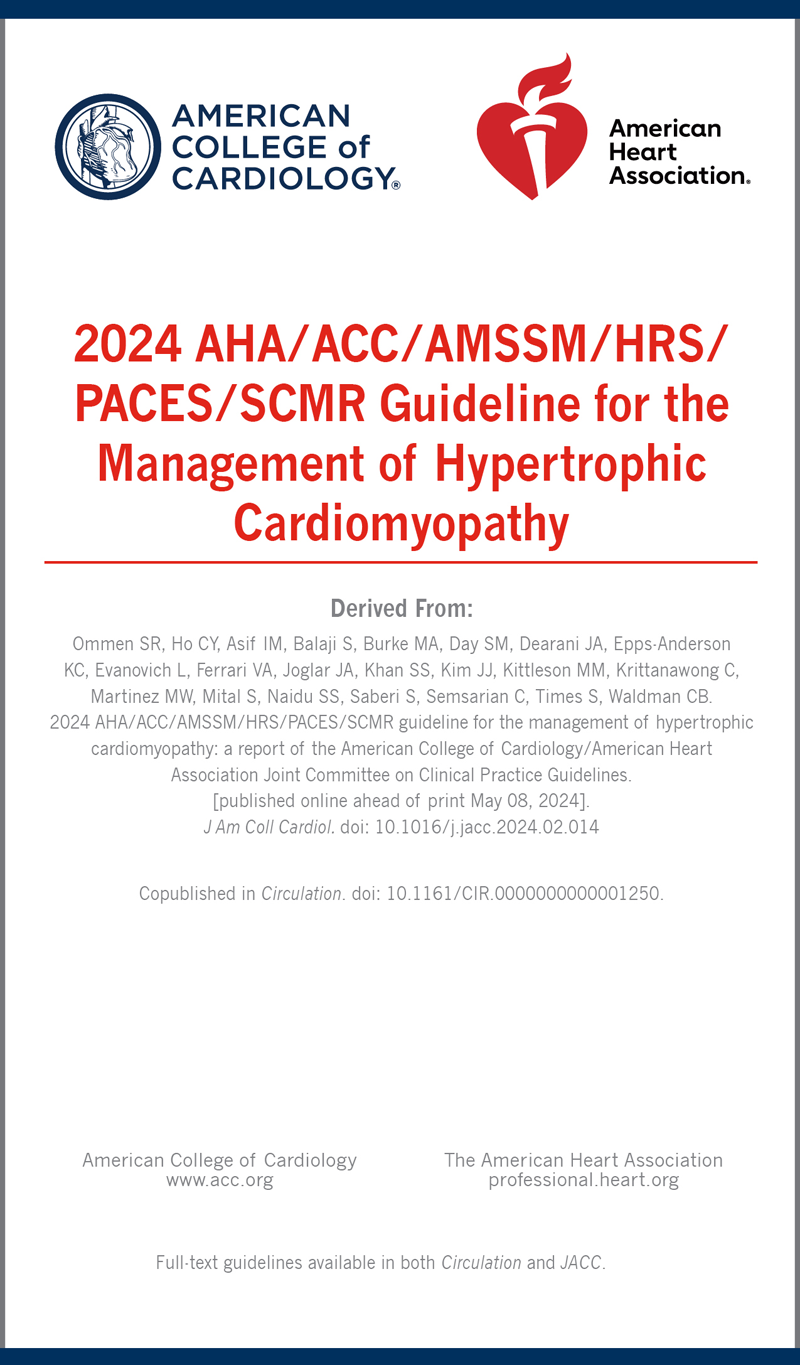
Diagnosis and Treatment of Patients with Hypertrophic Cardiomyopathy
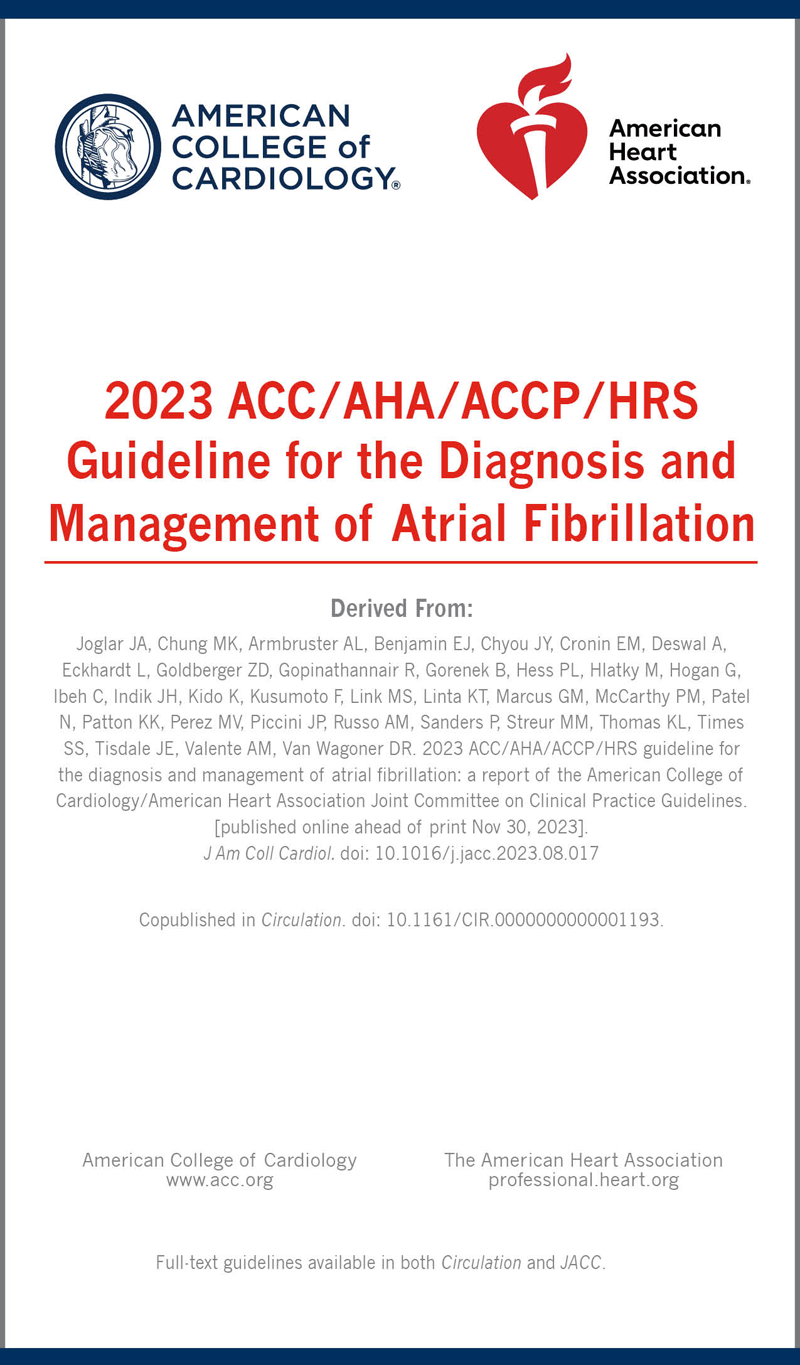
Management of Patients with Atrial Fibrillation
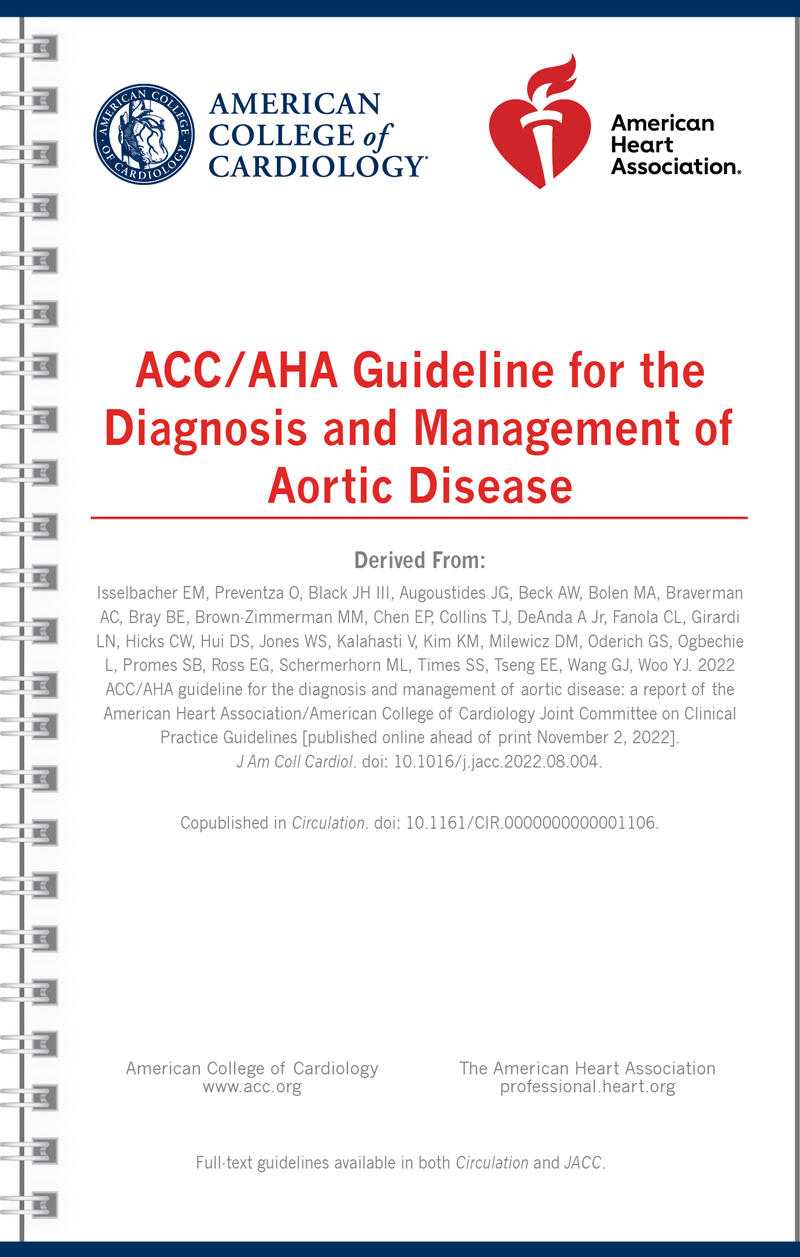
Diagnosis and Management of Aortic Disease
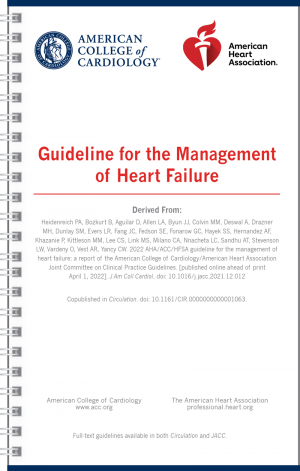
Heart Failure
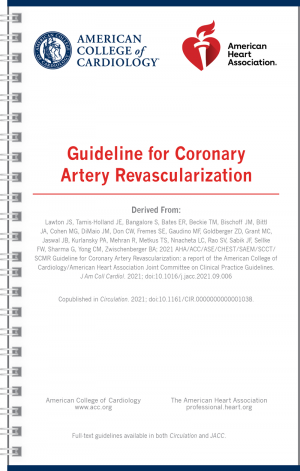
Coronary Artery Revascularization
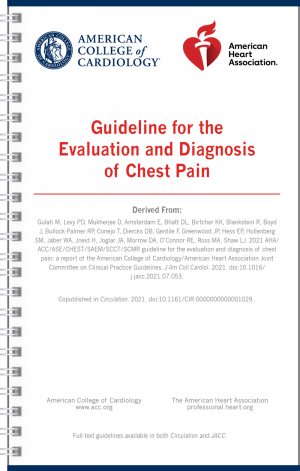
Evaluation and Diagnosis of Chest Pain
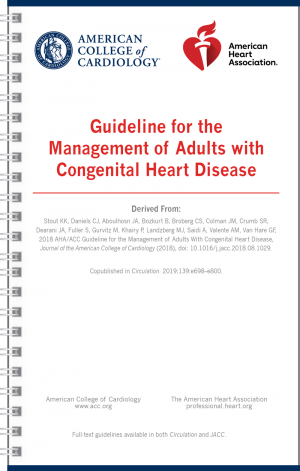
Management of Adults with Congenital Heart Disease
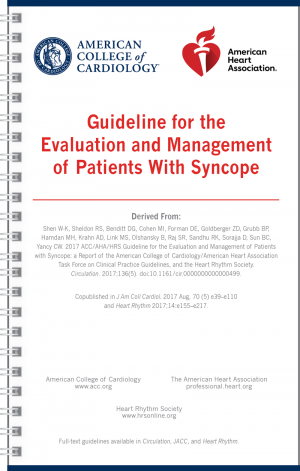
Evaluation and Management of Patients With Syncope
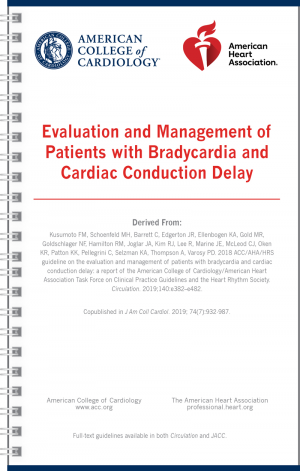
Evaluation and Management of Patients with Bradycardia and Cardiac Conduction Delay
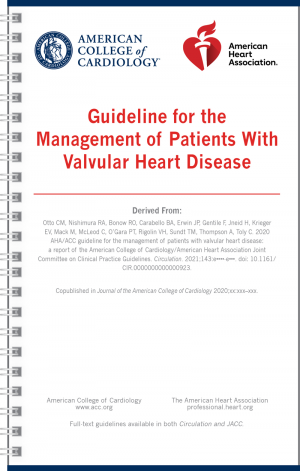
Valvular Heart Disease
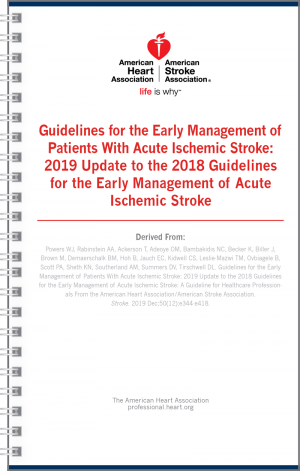
Early Management of Patients With Acute Ischemic Stroke
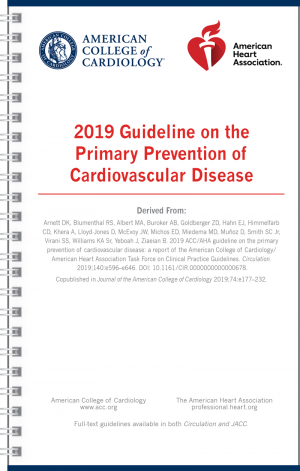
Primary Prevention of Cardiovascular Disease
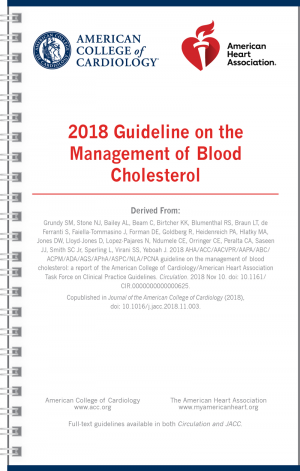
Management of Blood Cholesterol
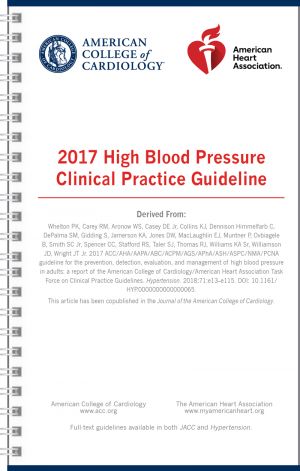
Prevention, Detection, Evaluation, and Management of High Blood Pressure in Adults
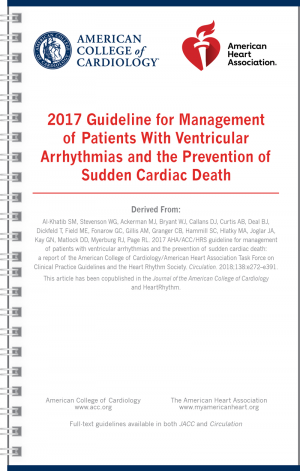
Management of Patients With Ventricular Arrythmias and the Prevention of Sudden Cardiac Death
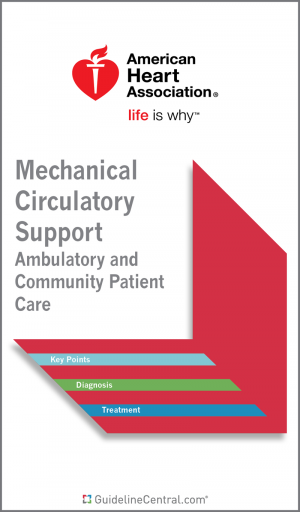
Mechanical Circulatory Support — Ambulatory and Community Patient Care
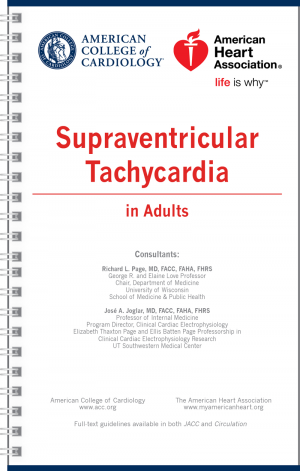
Supraventricular Tachycardia
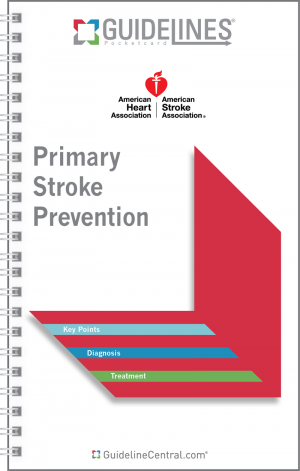
Primary Stroke Prevention
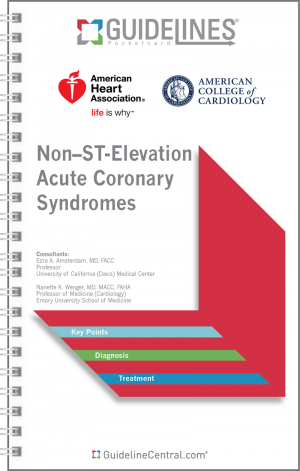
Non-ST-Elevation Acute Coronary Syndromes
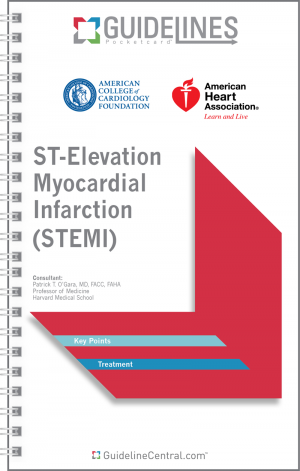
ST-Elevation Myocardial Infarction (STEMI)
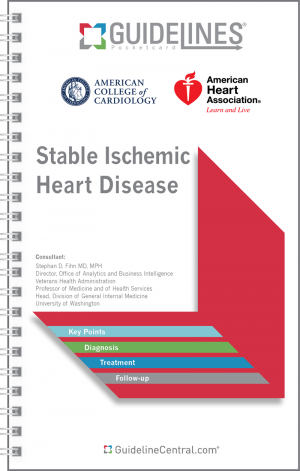
Stable Ischemic Heart Disease
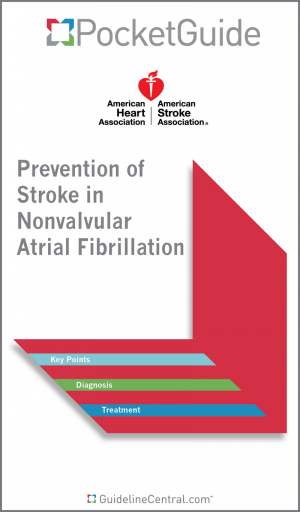
Prevention Of Stroke In Nonvalvular Atrial Fibrillation
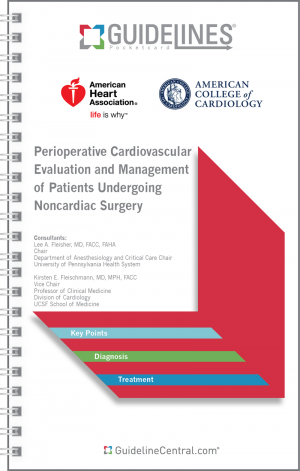
Perioperative Cardiovascular Evaluation and Management of Patients Undergoing Noncardiac Surgery
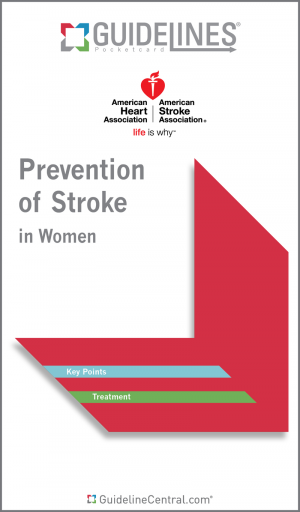
Prevention of Stroke In Women
